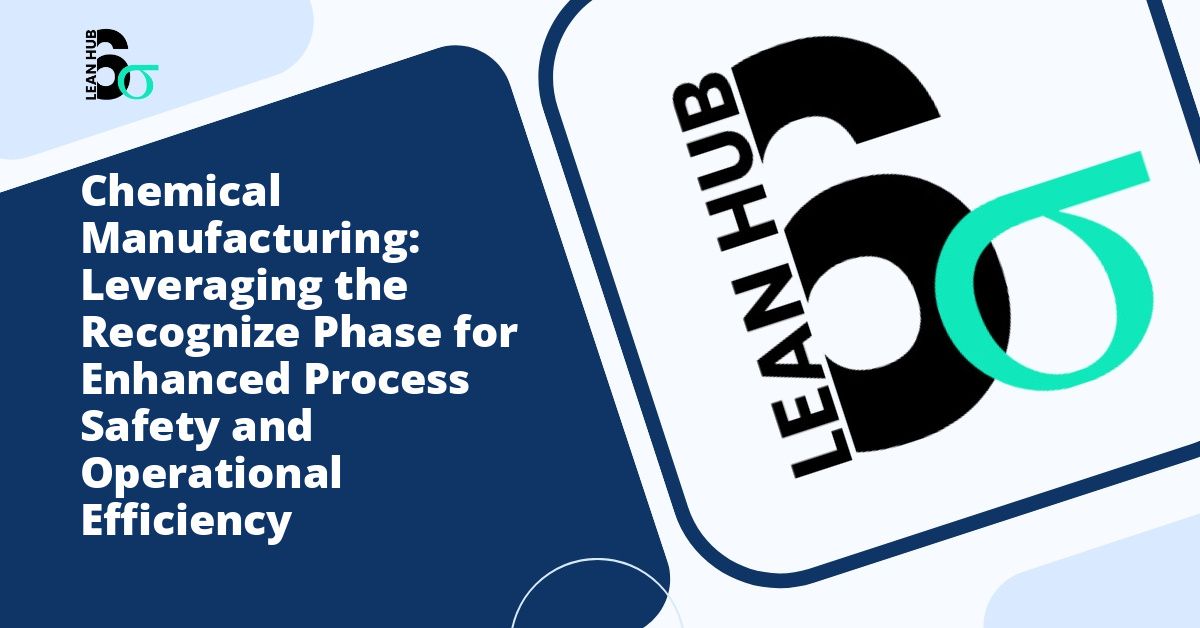In the highly competitive automotive manufacturing industry, quality control and defect reduction are not merely operational goals but essential survival strategies. Companies that master the art of identifying and addressing defects early in the production process gain significant advantages in customer satisfaction, cost management, and market reputation. Central to this endeavor is the recognize phase, a critical component of lean six sigma methodologies that forms the foundation for systematic quality improvement.
The automotive sector faces unique challenges in maintaining quality standards. With thousands of components coming together to create a single vehicle, the potential for defects multiplies exponentially. A single overlooked issue can cascade into recalls, warranty claims, and damaged brand reputation. This reality makes the recognize phase absolutely vital for manufacturers committed to excellence. You might also enjoy reading about Lean Six Sigma Recognize Phase: Balancing Quick Wins with Long-Term Transformation.
What Is the Recognize Phase?
The recognize phase represents the initial and arguably most crucial stage in any quality improvement initiative. It involves the systematic identification of problems, defects, and opportunities for enhancement within manufacturing processes. Unlike reactive approaches that address issues after they occur, the recognize phase emphasizes proactive detection and analysis. You might also enjoy reading about The Champion's Role in the Recognize Phase: Your Complete Guide to Lean Six Sigma Success.
In automotive manufacturing contexts, this phase requires teams to develop heightened awareness of potential quality issues before they become systemic problems. It involves gathering data, observing processes, listening to stakeholder feedback, and establishing baseline measurements that will guide subsequent improvement efforts. You might also enjoy reading about Clinic Operations: The Recognize Phase Guide for Private Practice Efficiency.
The recognize phase is not about jumping to solutions. Instead, it focuses on truly understanding what problems exist, where they occur, and how frequently they manifest. This disciplined approach prevents organizations from wasting resources solving the wrong problems or implementing fixes that address symptoms rather than root causes.
The Connection Between Lean Six Sigma and the Recognize Phase
Lean six sigma has become the gold standard methodology for quality improvement in automotive manufacturing. This powerful approach combines the waste-reduction principles of lean manufacturing with the defect-elimination focus of six sigma. Within this framework, the recognize phase aligns closely with the Define phase of the DMAIC (Define, Measure, Analyze, Improve, Control) cycle.
Lean six sigma provides structured tools and techniques that make the recognize phase more effective. These include:
- Voice of the Customer (VOC) analysis to understand quality expectations
- Process mapping to visualize workflows and identify complexity
- Data collection systems that establish performance baselines
- Pareto analysis to prioritize which defects deserve immediate attention
- Failure mode and effects analysis (FMEA) to anticipate potential problems
When automotive manufacturers embrace lean six sigma principles during the recognize phase, they create a common language and systematic approach that unites cross-functional teams around quality objectives. This alignment proves essential in complex manufacturing environments where engineering, production, quality assurance, and supply chain functions must collaborate seamlessly.
Key Activities During the Recognize Phase
Establishing Quality Metrics
The recognize phase begins with defining what quality means for specific automotive components and processes. Manufacturers must establish clear, measurable criteria that distinguish acceptable products from defective ones. These metrics might include dimensional tolerances, surface finish specifications, functional performance standards, and durability requirements.
For example, an automotive paint shop must define acceptable parameters for paint thickness, color matching, surface smoothness, and adhesion strength. Without these concrete definitions, recognition of defects becomes subjective and inconsistent.
Data Collection and Baseline Measurement
Effective recognition requires data. Automotive manufacturers must implement robust systems for capturing defect information across production lines. This includes automated inspection systems, manual quality checkpoints, and post-production testing protocols.
During the recognize phase, organizations establish baseline measurements that answer critical questions: How many defects currently occur? What types of defects are most common? Which production areas generate the most quality issues? What is the current cost of poor quality?
These baseline metrics provide the starting point against which all future improvements will be measured. They transform vague concerns about quality into specific, quantifiable challenges that teams can address systematically.
Process Observation and Mapping
Gemba walks, a practice borrowed from lean manufacturing, involve leaders and quality professionals spending time on the production floor observing actual work processes. This direct observation often reveals quality issues that data alone cannot capture.
During these observations, teams create detailed process maps that document every step in manufacturing sequences. These visual representations help identify complexity, redundancy, and points where defects are likely to occur. In automotive assembly, for instance, process mapping might reveal that certain fastening operations consistently produce torque variations that lead to subsequent failures.
Stakeholder Input Gathering
The recognize phase actively seeks input from multiple stakeholders. Production operators who work with equipment daily often possess invaluable insights about intermittent problems or subtle quality variations. Engineers understand design specifications and tolerance requirements. Maintenance personnel know which equipment tends to drift out of calibration. Quality inspectors see patterns in defect types and frequencies.
Customer feedback, warranty claims, and field failure reports also provide essential recognition inputs. These downstream signals often identify quality issues that slip through manufacturing inspections but cause problems in real-world usage.
Common Challenges in the Recognize Phase
Despite its importance, the recognize phase presents several challenges for automotive manufacturers. One significant obstacle is confirmation bias, where teams see only what they expect to see rather than objectively observing reality. This bias can cause organizations to repeatedly address familiar problems while missing emerging quality issues.
Another challenge involves data quality and availability. Some manufacturing operations lack adequate measurement systems, making accurate problem recognition difficult. In other cases, data exists but remains siloed across different departments, preventing holistic problem understanding.
Cultural resistance also hampers recognition efforts. In organizations where quality problems are met with blame rather than problem-solving support, employees may hesitate to highlight issues. This defensive culture prevents the honest recognition necessary for improvement.
Time pressure represents another barrier. In fast-paced production environments, taking time to thoroughly recognize and document quality issues can feel like an unaffordable luxury. However, this short-term thinking ultimately costs more through increased defects, rework, and customer dissatisfaction.
Best Practices for Effective Problem Recognition
Successful automotive manufacturers implement several best practices during the recognize phase. First, they cultivate a no-blame culture where identifying problems is celebrated rather than punished. This psychological safety encourages honest reporting and discussion of quality issues.
Second, they invest in adequate measurement systems and ensure data accessibility across organizational boundaries. Modern manufacturing execution systems (MES) and quality management software enable real-time visibility into defect patterns and trends.
Third, they apply the lean six sigma principle of going to gemba, ensuring that decision-makers maintain direct contact with production realities rather than relying solely on reports and dashboards.
Fourth, they establish cross-functional recognition teams that bring diverse perspectives to problem identification. Quality issues often exist at the intersection of design, manufacturing, and supply chain functions, requiring collaborative recognition approaches.
Finally, they maintain discipline in fully completing the recognize phase before rushing to solutions. This patience, though challenging in action-oriented cultures, prevents the costly mistake of solving poorly understood problems.
The Strategic Impact of Effective Recognition
When automotive manufacturers excel in the recognize phase, the benefits extend far beyond immediate defect reduction. Comprehensive problem recognition enables more efficient resource allocation, directing improvement efforts toward issues with the greatest quality and cost impact.
It also builds organizational capability. Teams that develop strong recognition skills become increasingly adept at anticipating problems before they occur, shifting from reactive firefighting to proactive prevention.
Furthermore, effective recognition creates momentum for change. When quality issues are clearly documented and quantified, building support for improvement initiatives becomes easier. Stakeholders can see precisely what problems exist and understand why addressing them matters.
Conclusion
The recognize phase represents the essential foundation for all quality improvement efforts in automotive manufacturing. By systematically identifying defects, establishing baselines, and truly understanding problems before attempting solutions, manufacturers position themselves for sustainable quality enhancement.
The integration of lean six sigma methodologies provides the structure and tools necessary to make recognition both rigorous and effective. As automotive manufacturing continues evolving with increasing complexity, automation, and customer expectations, the ability to recognize quality issues quickly and accurately will only grow in strategic importance.
Organizations that master this initial phase create competitive advantages that compound over time, building reputations for quality that translate directly into market success and customer loyalty.








